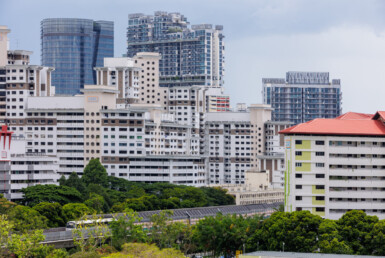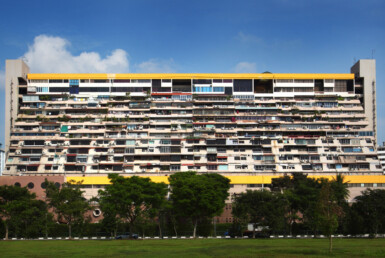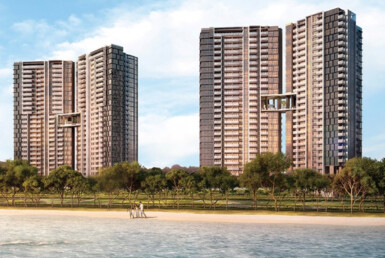Innovation, technology can help unlock opportunities in APAC real estate

STRUCTURAL people-driven trends such as ageing populations, labour shortages, changing consumer preferences and climate change will continue to present unique challenges for the real estate sector, both globally and within the Asia-Pacific region as real estate occupiers and owners increasingly adapt and innovate to mitigate associated risks and unlock opportunities.
In Asia-Pacific, changing consumer preferences are calling for real estate to supersede the functional bricks-and-mortar model to offer integrated services to their end-users.
This is epitomised in the emergence of omni-channel retailing and the rise of automation in enhancing the delivery of services and accelerating scale.
Innovation and thoughtful execution of technology can be used to deliver a superior user experience, thereby increasing asset quality.
There are also clear upsides from an investment perspective, as the implementation of these strategies can help to extend the longevity of investments, add value to an existing portfolio and create defensive income streams.
Know your consumer
The exponential growth in e-commerce in the region has driven retailers to adopt omni-channel retailing in order to provide consumers with a frictionless shopping experience offline and online.
Landlords and retailers are increasingly offering consumers curated experiences, enabling them to embrace the halo effect, which involves evaluating the interaction between stores and digital channels to optimise their impact.
Leveraging technology can enable landlords to take advantage of the value of customers interacting with their space. Big data can be collated and analysed to help landlords execute more effective targeting of customers and delivery of shopping incentives.
Such methods include the implementation of loyalty programmes to analyse customer expenditure and profile or the use of video analytics and algorithms, such as geo-fencing, to track how customers navigate a shopping centre and the dwell-time in specific areas for better space planning and tenant positioning.
For example, the Compass One shopping mall in Sengkang employs data and smart tracking of footfall to better engage customers through relevant services, curated campaigns and enhanced accessibility to high-traffic stores and services.
Unlocking the “silver dollar”
The region is experiencing a rapidly ageing population, with the median age forecast to continue growing over the next 30 years. An ageing population, however, does not necessarily equate to a slowdown for the retail sector.
With this demographic tending to have more disposable income than the working-age demographic, retailers can unlock this group’s “silver dollar” by offering technology-driven convenience features.
One way retailers can encourage more spending among the elderly is through e-commerce, especially as the ageing population is increasingly savvy with technology.
As the elderly are also typically less mobile, e-commerce offers a more convenient way for them to shop and access a wide range of goods.
The introduction of goods delivery via drones or autonomous vehicles, already being trialled in urban and rural areas of Japan, would also allow retailers and logistics providers to fulfil this growing demand, particularly among the elderly facing mobility and accessibility challenges, amid ongoing labour shortages.
This would also subsequently extend relevance for logistics services in markets with an ageing population, and could also lead to the development of other real estate sectors in Asia-Pacific, such as central kitchens for food preparation and delivery, or neighbourhood shopping centres acting as drone delivery points for parcel collection.
Gaining scale through automation
Labour constraints in the region have been cited as a key reason behind why some occupiers cannot lease more space or scale-up at a faster rate.
According to a 2018 Manpower Group survey on talent shortage, Hong Kong was the third hardest place to recruit talent, with 76 per cent of employers having difficulties filling positions.
Japan took the top place, with 89 per cent of employers facing the same challenge. This issue is expected to worsen as the population ages.
In response, more occupiers are turning to automation to reduce reliance upon scarce human resource, increase operational efficiencies and use space more effectively.
The rise of automated, unmanned stores across the region is a case in point as a growing number of unmanned convenience stores can be found in China, Japan and more recently in South Korea.
Technology enables stores to be unmanned. Self-identification is required for access into the store, with verification achieved through scanning palms or credit cards. Self-checkout can be achieved through 360-degree scanners at unmanned counters that can locate bar codes.
Humanoid robots, delivered by artificial intelligence, can also be used to answer simple questions, make product suggestions and guide customers to find them.
For example, a 1.2-metre tall humanoid robot named Pepper, developed by Japan’s Softbank Robotics Corp, can be found across Asia-Pacific.
Closer to home, a growing number of hotels in Singapore including Yotel, M Social and Hotel Jen are offering room service through autonomous robots, from delivering small amenities such as bottled water, towels, toiletries, to cooking an omelette.
HaiDiLao, one of Asia’s largest restaurant chains, is also working with Japanese electronics giant Panasonic to bring “hotpotbots” to their new Beijing location.
Increasing output through offering a superior customer experience, higher customer demand and operational efficiencies bodes well for real estate, as this would require occupiers to scale up to enjoy economies of scale. Demand for space, therefore, follows accordingly.
Alongside increasing innovation in the real estate sector, the Asia-Pacific region has a big part to play in leveraging technology to reduce the carbon footprint of the built environment.
According to the Asian Development Bank, 40 per cent of the world’s carbon dioxide emissions are attributable to the region.
The procurement of green energy, on-site generation of renewable energy, installation of smart technology to reduce energy use, and implementing low or “no cost” energy efficiency measures can help towards achieving green certification, a benchmark for sustainability.
This has benefits to investors of higher distributable yields from green buildings, as evidenced in a recent M&G Real Estate study.
Leveraging technology to future-proof our assets by making them more service-centric, resilient and environmentally-friendly not only reaps benefits for investors, but for occupiers too in achieving greater operational efficiency in the long run.
https://www.businesstimes.com.sg/real-estate/innovation-technology-can-help-unlock-opportunities-in-apac-real-estate



